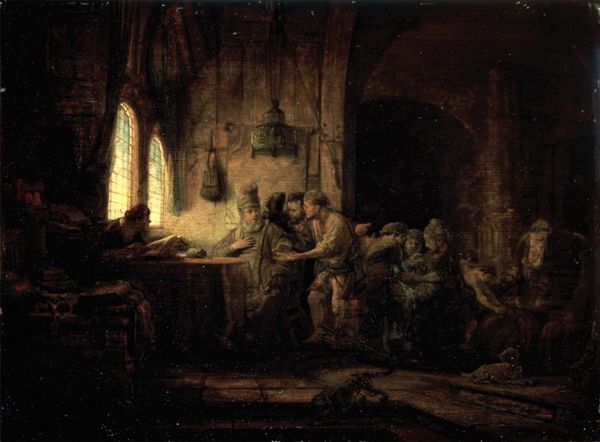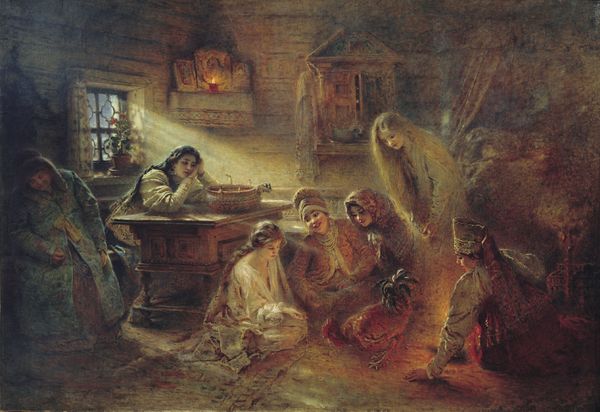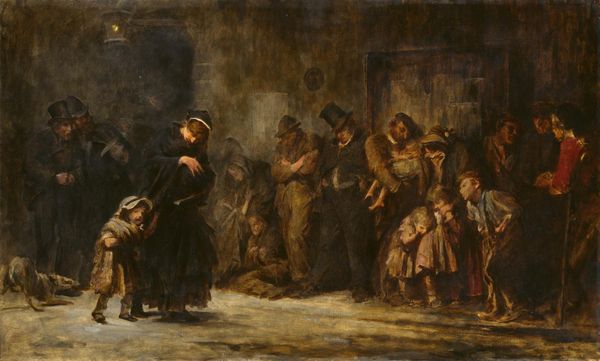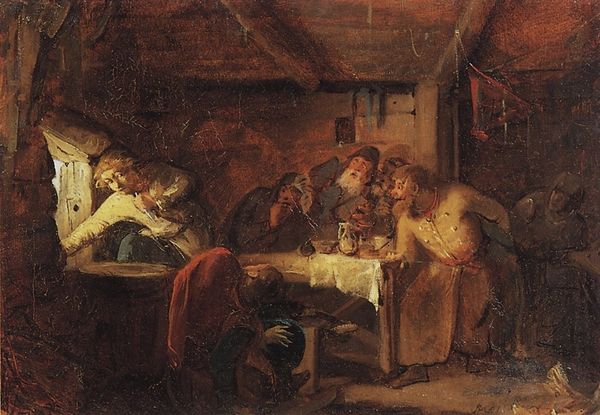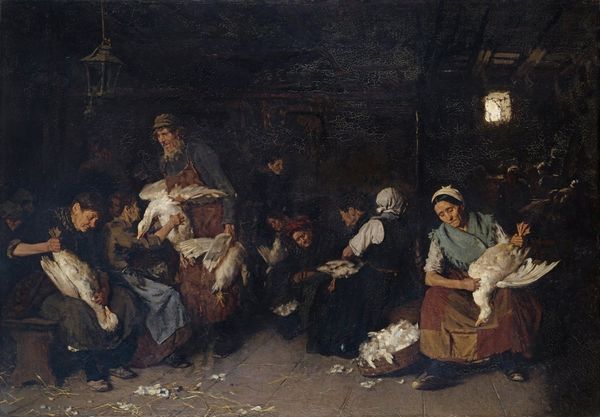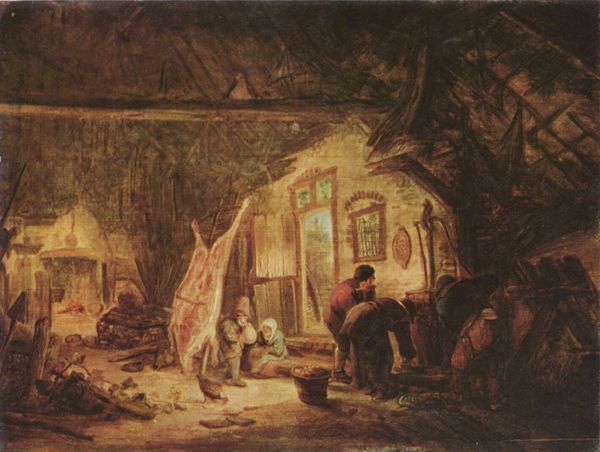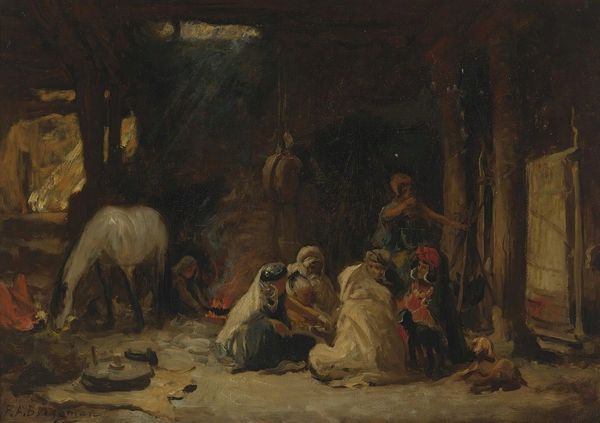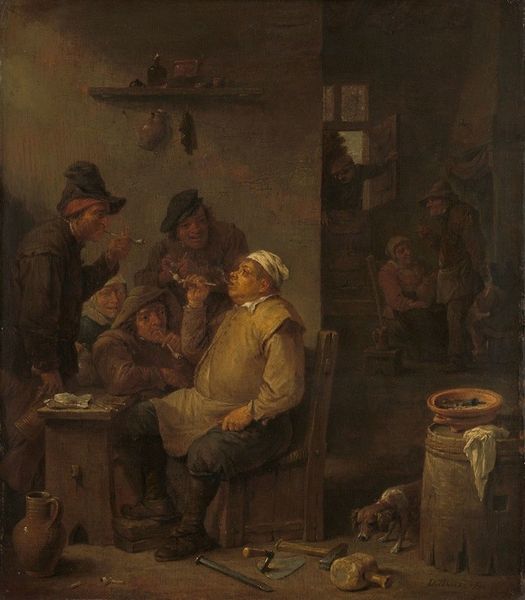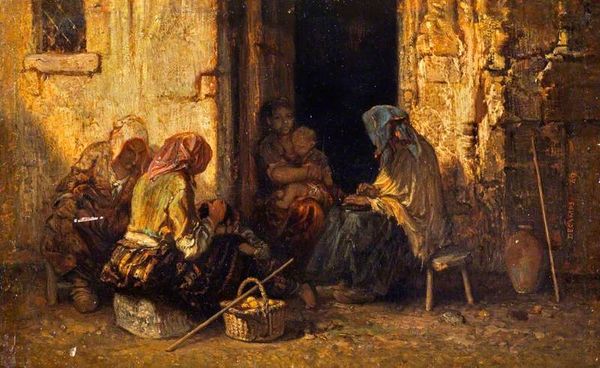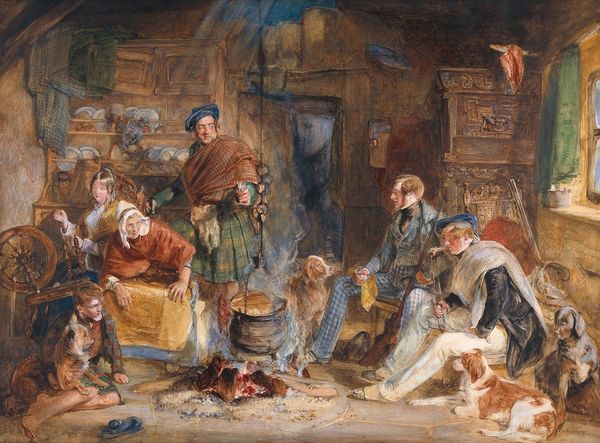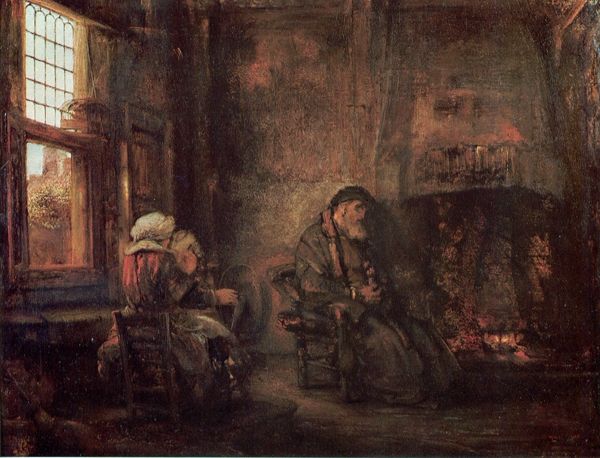
Copyright: Public domain
Curator: Jules Breton’s "A Party for Grandfather," from 1864, captures a tender family scene in what looks to be a charcoal drawing, though watercolor hints at a subtler touch, softening the otherwise rigid depiction of rural life. What strikes you immediately about this composition? Editor: It's a poignant tableau, almost stage-lit in its composition. There's this intense warmth concentrated on the embrace between grandfather and child, with everyone else orbiting around that emotional core. The limited color palette intensifies that sense of intimacy, a shared secret in a rustic interior. Curator: Absolutely. Breton’s rural genre scenes, so characteristic of academic art from this era, served a particular function. France was rapidly modernizing, and images like this helped to solidify certain idyllic notions of rural life as timeless and inherently good. Think of it as a visual antidote to the anxieties of urban expansion and industrialization. Editor: So, while it might appear to simply depict a loving family moment, there's an underlying reinforcement of societal values at play? That focus on the "simple life" could be read as a way of glossing over the actual hardships faced by rural communities. Looking closer, you can almost see the figures flattened and depersonalized, reduced to archetypes. Curator: Precisely. This interplay between the visible sentimentality and the underlying social agenda is crucial. It was meant to reassure urban audiences that traditional ways of life were stable, orderly, and, most importantly, morally superior, providing a sense of national unity amidst growing class divisions. Breton walked a fine line, satisfying academic expectations while injecting a dose of Realism—though certainly not radical. Editor: It raises complex questions, then, about who this work was intended for and what kind of emotional response it sought to evoke. We're left to wonder about the untold stories within this supposedly harmonious scene: What are their living conditions actually like? What burdens do these women and children carry? How does power function within this family unit? Curator: I find myself pondering what exactly this party signifies within that broader socio-political landscape. A genuine celebration of family? Or a constructed image deployed to allay urban anxieties? Editor: Either way, it has opened a window into reconsidering the power structures inherent in images portraying ideal families.
Comments
No comments
Be the first to comment and join the conversation on the ultimate creative platform.
